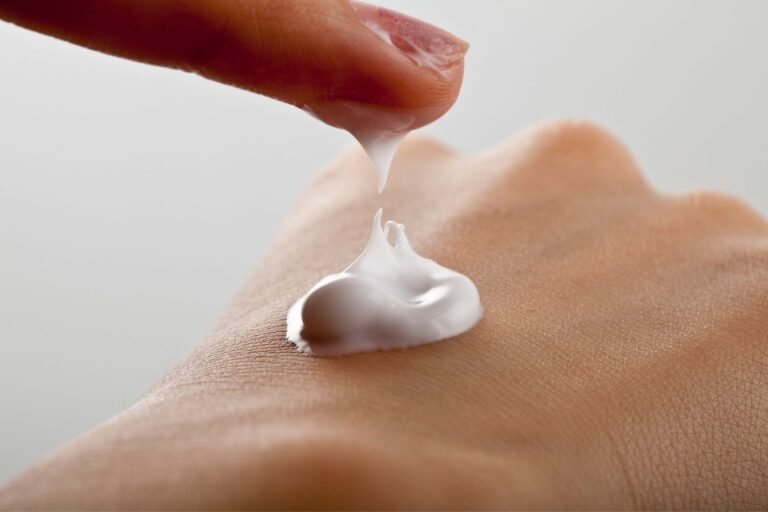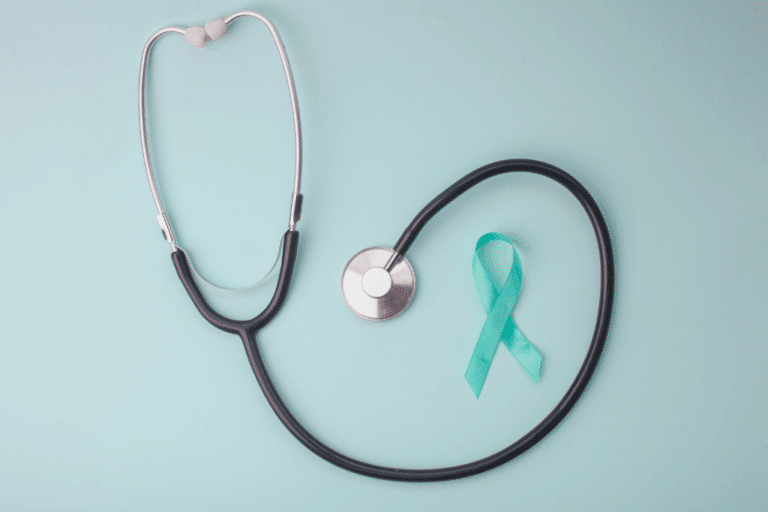Hormone Impostors in Perimenopause
When it comes to your health, we are all pretty good at knowing what NOT to put in our bodies. But, what about what we are putting ON our bodies? You may not realize this, but your skin is a giant mouth…most substances you put on your skin get absorbed and go directly into the bloodstream. So your favorite cosmetics and lotions could contain ingredients that are endocrine disrupters and wreaking havoc with your hormones in perimenopause and menopause.
According to the Environmental Working Group (EWG), the average American is exposed to over 120 chemicals in their personal care products alone, every day. Most of these products end up on your body’s largest organ-your skin. The scary thing…many of these chemicals don’t break down but rather accumulate in your body. What are some of the effects of this chemical accumulation on your hormones? Keep reading to find out more….
What are Endocrine Disrupting Chemicals (EDCs)?
The endocrine system is a network of glands and organs that manufacture, store, and secrete hormones-which act as chemical messengers in your body. Endocrine-disrupting chemicals, or EDCs, are chemicals or mixtures of chemicals that interfere with the way the body’s hormones work. Some EDCs mimic our hormones, while others block natural hormones from working properly. Other EDCs affect the levels of hormones in our blood by changing how they are made, broken down, or stored in our body.
What Are Some Examples of EDCs?
Phthalates– are used to make plastics soft or to make fragrances and cosmetics stick to your body longer. Examples would be nail polish or hair spray. These chemicals are linked to thyroid irregularities.
Glycol ethers– are a common solvent in cosmetics. They may damage fertility or the unborn child.
Parabens– are a type of preservative. They prolong the shelf life of personal care products. They also disrupt hormone function by mimicking estrogen. Too much estrogen can trigger cell division and the growth of tumors.
BHA/CHT– is found in some lipsticks and moisturizers. This ingredient has been associated with liver damage and thyroid hormone levels.
BPAs– used to make certain plastics, BPA imitates the sex hormone estrogen. It has been linked to all sorts of health problems such as breast cancer, early puberty, infertility, and polycystic ovarian syndrome (PCOS).
DEA– used to make cosmetics creamy or sudsy. Found in moisturizers and sunscreens. They can cause skin irritation and may be carcinogenic.
Oxybenzone– is one of the highest-risk chemicals in sunscreen. Studies indicate that oxybenzone and its metabolites disrupt the hormone system.
So, now that we know some of the biggest EDCs, what can we do to avoid them? The following list contains a variety of different tactics to avoid EDCs in your everyday personal care routine.
Seven Ways to Avoid EDCs
- Look for ingredients such as “fragrance” or “parfum.” This is a generic term for ingredients that often include phthalates.
- Choose products labeled “phthalate-free,” BPA-free,” and “paraben-free.”
- Wash your hands often. Especially before preparing food or eating.
- Check your sunscreen labels. Check out this guide for safer sunscreen use.
- Give your skin a break from harsh makeup and try a bare-free look. Many of us are still cooped up inside due to COVID-19 restrictions, so not many people see us anyway. You can also use Zoom’s “touch up my appearance feature” to fake it.
- Try a natural deodorant.
- Streamline your personal care products and replace them with cleaner alternatives.
Try some DIYs
- Coconut oil– can be used as a makeup remover or a deep hand and body moisturizer.
- Simple body scrub– thoroughly combine brown sugar and coconut oil, adding a drop of essential oil, if you like. Mix well and use in your next bath or shower.
- Relaxing bath salts– combine Epsom salts, coarse sea salt, baking soda, and a few drops of your favorite essential oil. Mix the ingredients well and add a few tablespoons to your next bath.
- Ditch plastic packaging- use glass, cardboard, or plastic-free alternatives.
- Rate your personal care products- and find safer ones at the Environmental Working Group’s Skin Deep Cosmetic Safety Database.
Too Long, Didn’t Read (TL;DR)
Endocrine-disrupting chemicals (EDCs) interfere with our endocrine system, wreaking havoc on our hormones. While overwhelming at first, with time and research, it is possible to limit your EDC exposure. A Savvy Sister can start by following seven simple steps to spot common EDCs and avoid them by using cleaner alternatives.
Dr. Anna Garrett is a menopause expert and Doctor of Pharmacy. She helps women who are struggling with symptoms of perimenopause and menopause find natural hormone balancing solutions so they can rock their mojo through midlife and beyond. Dr. Anna is the author of Perimenopause: The Savvy Sister’s Guide to Hormone Harmony. Order your copy at www.perimenopausebook.com.
Dr. Anna is available for 1-1 consultation. Find out more at www.drannagarrett.com/lets-talk




